Discover the Colorful Charm of a Nubian Village in Egypt
If you're searching for a vibrant and culturally rich destination, look no further than the Nubian Villages in Egypt. Located in the beautiful city of Aswan, these villages are renowned for their colourful houses made from clay mud. Step into a world of captivating beauty and immerse yourself in the charm and traditions of the Nubian people.
In this blog post, we will explore the unique architecture, rich history, and fascinating culture of these vibrant villages. Get ready to discover the colorful charm of a Nubian Village in Egypt.
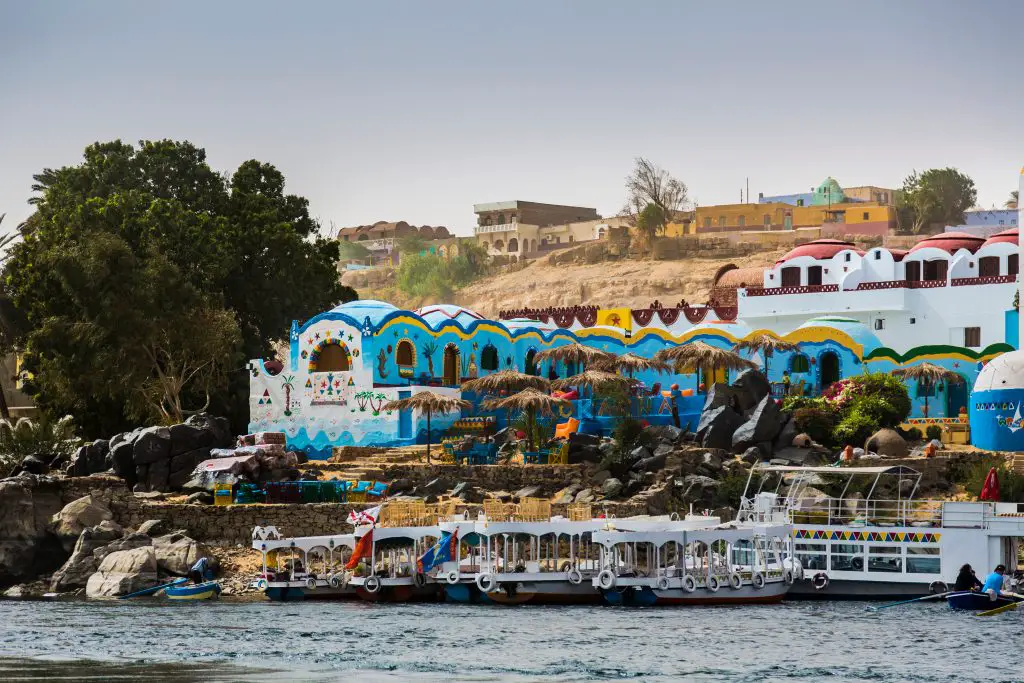
The beauty and rich history of Nubian villages in Egypt
Nestled along the banks of the Nile River in southern Egypt, the Nubian villages are known for their unparalleled beauty and rich history. These villages, inhabited by the Nubian people, offer a glimpse into a traditional way of life deeply rooted in culture and heritage.
The natural surroundings of the Nubian villages are mesmerizing, with stunning views of the river and the desert landscape. The colourful houses and buildings, painted in vibrant shades of blue, pink, and yellow, create a picturesque scene that is truly enchanting. These vibrant colours are not simply for aesthetic purposes; they also serve a practical function, keeping the houses cool in the scorching desert heat.
Each Nubian village has its unique charm, with narrow alleyways, intricately decorated walls, and ornate doorways. The architecture in these villages reflects Nubian culture and craftsmanship, with intricate patterns and symbols adorning the walls of homes and public buildings.
The history of the Nubian people dates back thousands of years, and their villages have been the centre of civilization since ancient times. The Nubians have a strong connection to their land and the Nile River, which has sustained their way of life for generations. They have preserved their customs and traditions, making the Nubian villages a testament to their rich cultural heritage.
Visiting the Nubian villages is a feast for the eyes and an opportunity to immerse oneself in the vibrant Nubian culture. The warm hospitality of the Nubian people is evident as they welcome visitors with open arms, sharing their stories, traditions, and delicious cuisine. From colourful festivals and events to mouthwatering traditional dishes, visiting the Nubian villages is an experience that will leave a lasting impression.
Whether you are a history enthusiast seeking to explore ancient civilizations or a traveller looking to immerse yourself in local culture, a trip to the Nubian villages in Egypt will surely leave you captivated by their beauty and charm.

Exploring the vibrant culture and customs of the Nubian people
The vibrant culture and customs of the Nubian people
The Nubian people are known for their rich cultural heritage and vibrant traditions. Their unique customs and celebrations make them a fascinating community to explore. Here are some highlights:
-
Language and music: The Nubian people have a language distinct from Arabic, although many Nubians also speak Arabic. Traditional Nubian music is characterized by rhythmic drumming and melodic tunes played on instruments like the tambourine and oud.
-
Art and crafts: Nubian art is renowned for its bright colours and intricate patterns. They are skilled in pottery, weaving, and embroidery. Nubian textiles are often adorned with geometric shapes and vibrant hues, reflecting their love for colour and aesthetics.
-
Festivals and events: The Nubian people celebrate various festivals throughout the year. One of the most significant is the "Dekka" festival, which takes place in Aswan and involves traditional dancing, music, and feasting.
-
Cuisine: Nubian cuisine is a blend of African and Middle Eastern flavours. Popular dishes include "Foul" (a flavorful bean stew), "Mesh" (a type of stuffed pigeon), and "Nubian breakfast," which consists of bread, cheese, honey, and date syrup.
-
Hospitality: Nubians are known for their warm hospitality and welcoming nature. Visitors to Nubian villages are often greeted with open arms and offered traditional refreshments.
The Nubian people's vibrant culture and customs are a testament to their resilience and rich history. Exploring their traditions and way of life is a captivating experience that offers a glimpse into a unique and colourful world.
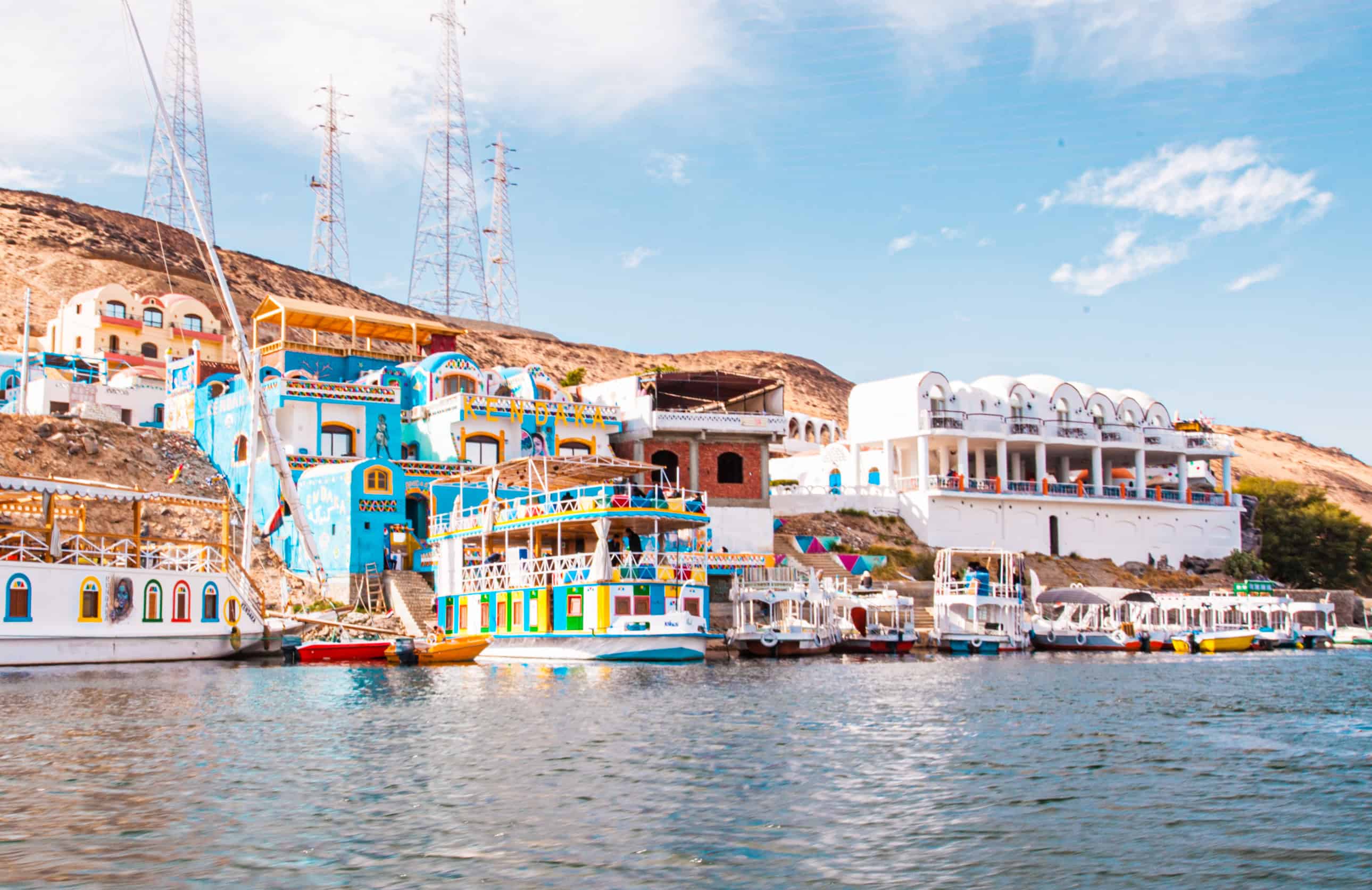
Geographical Location and Significance of Nubian Villages in Egypt
The Nubian villages in Egypt are located in the southern part of the country, primarily along the banks of the Nile River. These villages are known for their rich cultural heritage and unique architectural style. The Nubian people have inhabited this region for thousands of years and have a deep connection to the land and the river.
The geographical location of the Nubian villages is significant for several reasons. Firstly, it is an area of great natural beauty, with lush green landscapes, crystal-clear water, and breathtaking river views. The villages are surrounded by stunning natural scenery, including rocky hills and desert landscapes. This unique environment has shaped the Nubian way of life and their close relationship with nature.
Secondly, the Nubian villages have historical and cultural significance. They are home to a vibrant and ancient culture passed down through generations. The Nubian people have a rich oral tradition and have preserved their customs, traditions, and language over centuries. The villages are a living testament to this cultural heritage and provide a unique insight into the history and traditions of the Nubian people.
Here's a list of the key points regarding the geographical location and significance of Nubian villages in Egypt:
- Located in southern Egypt, along the banks of the Nile River
- Surrounded by natural beauty, including lush green landscapes and rocky hills
- Home to a vibrant and ancient culture that has been preserved over centuries
- Provide a unique insight into the history and traditions of the Nubian people
- Have historical and cultural significance in Egypt's overall heritage.
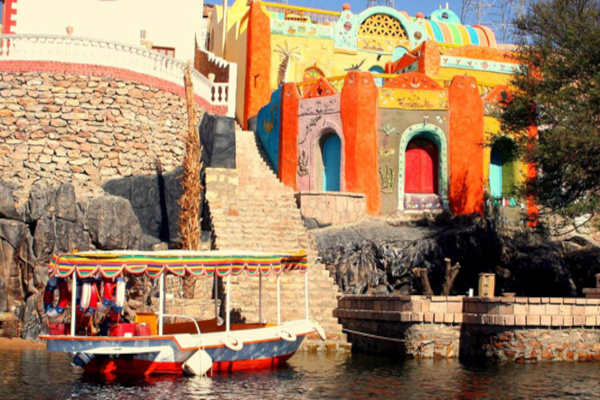
Historical background and cultural heritage of the Nubian people
The Nubian people have a rich and fascinating historical background that spans thousands of years. They are the descendants of the ancient Nubian civilization, one of the oldest African civilisations, which flourished along the banks of the Nile River in modern-day Sudan and southern Egypt. The Nubian culture is deeply rooted in their history, and they take great pride in preserving their cultural heritage.
The Nubian people have faced various challenges throughout history, including invasions and displacement. In the 1960s, the construction of the Aswan High Dam resulted in the flooding of many Nubian villages. As a result, thousands of Nubians were forced to relocate, and their homes and centuries-old traditions were disrupted. However, despite these challenges, the Nubians have managed to preserve their cultural identity and heritage.
Nubian culture is known for its vibrant music, folk dances, and handicrafts. The Nubian language, known as Nubian or Nobiin, is also an important part of their cultural heritage. Nubians are skilled artisans famous for their intricate embroidery, pottery, and basket weaving. They use vibrant colours and geometric patterns in their designs, reflecting their connection to nature and spiritual beliefs.
Key aspects of Nubian cultural heritage:
- Rich oral history and storytelling tradition
- Strong community values and close-knit family networks
- Unique musical instruments like the tamboura and the harp
- Traditional ceremonies and rituals to mark important life events
- Festivals that celebrate harvests, birthdays, and religious occasions
The Nubian people's resilience and pride in their heritage have contributed to the vibrant and welcoming atmosphere of the Nubian villages in Egypt today.

Traditional Architecture and Design
Distinctive features of Nubian architecture and design
Nubian architecture is renowned for its distinctive features and unique design elements. The Nubian people have a long history of creating buildings that blend seamlessly with their natural surroundings and embody the vibrant culture of their communities.
Some key characteristics of Nubian architecture and design include:
1. Use of earth materials: Nubian houses are traditionally made using local clay, sand, and straw materials. Using these natural materials helps with insulation and harmonizes with the desert landscape.
2. Dome-shaped roofs: Nubian houses typically feature dome-shaped roofs, which provide excellent insulation from the scorching desert sun. The domes also give the buildings a unique and visually striking appearance.
3. Bright and bold colours: Nubian architecture is known for its vibrant colours, particularly in decorating doorways, walls, and windows. The bright blues, greens, yellows, and reds create a visually stunning contrast against the desert backdrop.
4. Intricate patterns and motifs: Nubian houses often feature intricate geometric patterns and motifs. These ornate designs, often painted or carved onto the walls and furniture, reflect the Nubians' rich cultural heritage and artistic traditions.
5. Courtyards: Many Nubian houses are centred around courtyards, which serve as communal gathering spaces for families and neighbours. These open-air spaces are often adorned with plants, palm trees, and colourful textiles, adding to the overall charm of the architecture.
The distinctive features of Nubian architecture and design make it a truly unique and captivating aspect of the Nubian villages in Egypt. Visitors to these villages can immerse themselves in the beauty and charm of these architectural wonders while experiencing the warm hospitality of the Nubian people.

Use of vibrant colours and intricate patterns in Nubian houses and buildings
The use of vibrant colours and intricate patterns is a distinctive feature of Nubian houses and buildings. Nubian architecture embraces a lively and captivating aesthetic that differentiates it from traditional styles. The vibrant colours, such as shades of blue and yellow, are used to decorate the interiors and exteriors of the buildings, creating a visually stunning and welcoming atmosphere.
The intricate patterns found in Nubian architecture are often geometric, featuring repetitive motifs and symbols. These patterns are meticulously hand-painted on walls, doorways, and ceilings, showcasing the Nubian people's artistic talent and attention to detail. The patterns can vary from simple and symmetrical designs to more complex and abstract arrangements, adding depth and visual interest to the buildings.
The use of vibrant colours and intricate patterns in Nubian architecture serves an aesthetic purpose and carries cultural and symbolic significance. The colours and patterns often reflect Nubian traditions, beliefs, and the natural environment surrounding the villages. They are a reflection of the Nubian identity and a way for the people to express their heritage and celebrate their cultural heritage.

Cultural Traditions and Festivals
Celebration of Nubian customs and traditions
Nubian villages in Egypt are known for their vibrant culture and rich traditions, celebrated through various customs and festivals. One of the most important customs observed by the Nubian people is the Henna ceremony, where intricate designs are applied to the hands and feet of women as a form of adornment and celebration. This ceremony is often accompanied by singing, dancing, and traditional music.
Another significant celebration in Nubian villages is the Abu Simbel Festival, held annually in honour of the relocation of the Abu Simbel temples. During this festival, locals and tourists gather to witness the sun illuminating the temple's inner sanctum, casting a beam of light on the statue of Ramses II. The event is marked by festivities, including traditional dancing, music performances, and cultural displays.
The Nubian people also celebrate their cultural heritage through various art forms, such as basket weaving, pottery making, and hand embroidery. These crafts showcase the intricate patterns and vibrant colours of Nubian design and architecture.
Overall, celebrating Nubian customs and traditions reflects the deep-rooted pride and sense of identity that the Nubian people have for their cultural heritage. Through these celebrations, they can preserve and share their traditions with the world.
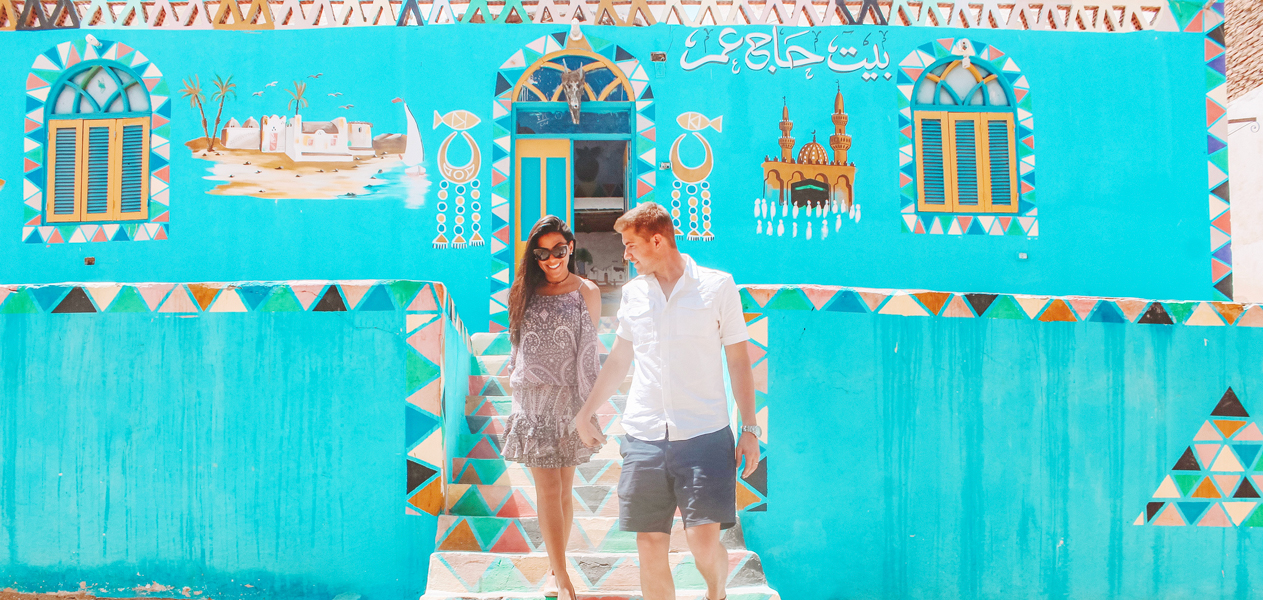
Overview of major festivals and events celebrated in Nubian villages
Nubian villages in Egypt are known for their vibrant cultural traditions, and their festivals and events are no exception. These celebrations offer a glimpse into the lively and colourful spirit of the Nubian people. Here are some of the major festivals and events celebrated in Nubian villages:
-
Ashurah Festival: This festival commemorates the martyrdom of Imam Hussein, the grandson of Prophet Muhammad. It is a time for reflection, mourning, and religious processions.
-
Sham Al-Nassim: This ancient Egyptian festival marks the coming of spring, and Nubians celebrate it with joy and merriment. Families gather for picnics, enjoy special meals, and exchange gifts.
-
Koshari Festival: Koshari, a traditional Nubian dish, takes centre stage. It is a culinary competition where Nubian families showcase their unique Koshari recipes and compete for the title of the best Koshari maker.
-
Festival of the Phoenix: This festival is held in the village of Gharb Soheil to celebrate the reconstruction of the village after its relocation due to the building of the High Dam. The event features traditional music, dancing, and a grand parade.
These festivals and events add to the charm and vivacity of Nubian villages, making them a fascinating destination for those seeking to explore the rich cultural heritage of Egypt.

Cuisine and Culinary Delights
Introduction to Nubian Cuisine and culinary traditions
Nubian cuisine offers a delightful and unique culinary experience for those who visit the Nubian villages in Egypt. The Nubian people have a rich gastronomic heritage that reflects their history, culture, and environment. Traditional Nubian cuisine features a variety of flavours, spices, and ingredients that create a burst of taste and aroma. Here are some key aspects of Nubian cuisine:
• Use of local ingredients: Nubian dishes often incorporate locally sourced ingredients such as fish from the Nile River, vegetables, and grains. The use of fresh and natural produce enhances the authenticity of the cuisine.
• Flavorful spices and herbs: Nubian cuisine is known for its aromatic and flavorful cumin, coriander, ginger, and garlic. These spices add depth and richness to the dishes.
• Staple dishes: Some popular Nubian dishes include molokhia (a leafy green soup), ful medames (slow-cooked fava beans), and ta'meya (Egyptian falafel).
• Sweet treats: Nubian cuisine also includes a variety of delicious desserts and sweets. One such treat is koshaf, a dried fruit compote with nuts and honey.
Overall, Nubian cuisine showcases the creativity and craftsmanship of the Nubian people, and it is an integral part of experiencing the vibrant culture of the Nubian villages in Egypt.
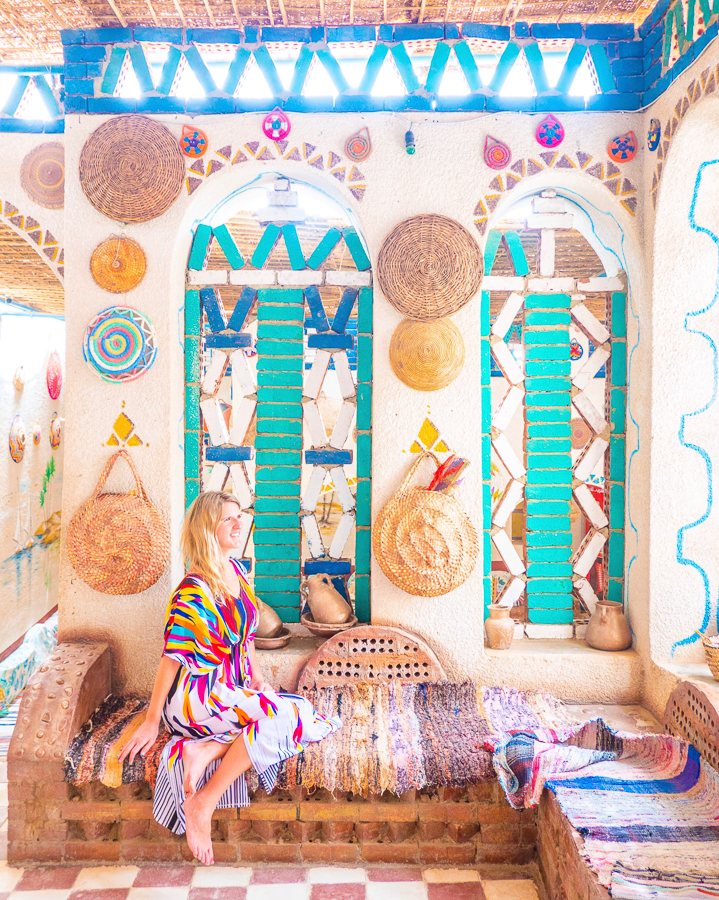
Highlighting popular dishes and traditional ingredients
When exploring the culinary traditions of Nubian villages in Egypt, you will be delighted by the array of flavorful dishes and unique ingredients:
Nubian cuisine is known for its use of aromatic herbs, spices, and fresh ingredients. Here are some popular dishes and traditional ingredients you can expect to find:
-
Abu Simbel Pasta: This dish is a local favourite and features homemade pasta topped with a flavorful tomato sauce, garlic, onions, and a blend of spices.
-
Fasoulia: This hearty dish consists of tender white beans cooked with tomatoes, garlic, onions, and spices. It is often served with rice or bread.
-
Dakwa: A delicious bread made from wheat flour and seasoned with butter, milk, and dates. It is typically enjoyed for breakfast or as a snack.
-
Meshaltet: A traditional Nubian sweet made from honey, butter, nuts, and spices. It is often served during special occasions and celebrations.
-
Bazin is a staple dish made from sorghum flour cooked with a thick porridge-like consistency. It is commonly served with meat or vegetable stews.
Nubian cuisine reflects the region's rich cultural heritage and centuries-old traditions. Using local ingredients and traditional cooking methods results in a vibrant and flavorful culinary experience for visitors to Nubian villages in Egypt.
